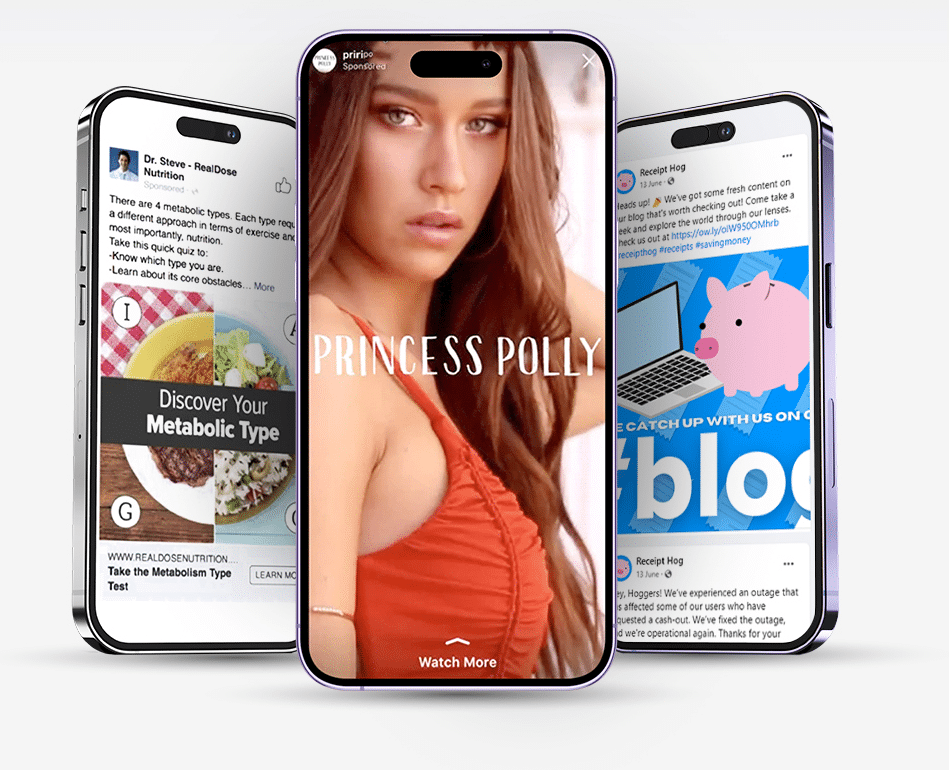Grow your business with Apple Search Ads Advertising
Increase your revenue and scale your business with AdvertiseMint, the trusted Apple Search Ads advertising agency!

Grow your business with Facebook, Instagram & TikTok advertising. Let's talk 844-236-4686.
Increase your revenue and scale your business with AdvertiseMint, the trusted Apple Search Ads advertising agency!


When it comes to running apple search ads ads, our apple search ads marketing experts know how to make your business profitable. Increase your revenue and scale your business with AdvertiseMint, the trusted apple search ads advertising agency!
Updated: July 4, 2025
Can you guarantee my Apple Search ads will be profitable?
The answer is simple
The only guarantee is that Apple Search will show your ads and take your money.
The rest is all a game. Constantly moving. Constantly adapting.
New Algorithms. New Competitors. New Challenges.
Its like a casino, and the house was built to win.
So how can your business grow?
Come closer! We’ll tell you how!
You need a guide. An expert. A team of experts.
Experts who navigate the Apple Search ads jungle all day, every day.
Experts that constantly produce results.
They combine knowledge and data with creativity.
They know what works. They know how to scale.
They will outwork anyone to get results.
And guess what…

Apple Search Ads is a mobile advertising platform offered by Apple that allows app developers and marketers to promote their apps directly within the App Store search results.
This powerful tool allows advertisers to target users based on relevant keywords, demographics, locations, and devices. By leveraging diverse targeting options, advertisers can reach a high-intent audience actively searching for apps, enhancing the chances of driving app installations and user engagement.
Apple Search Ads operates on a cost-per-tap (CPT) model, where advertisers pay only when a user taps on their ad, ensuring a more cost-effective approach to app marketing.
Furthermore, the platform provides valuable real-time data and insights, enabling advertisers to optimize their campaigns for maximum performance and ROI.


Whether your business should use Apple Search Ads for advertising depends on your marketing objectives, target audience, and the nature of your app or business. If your app is available on the App Store and you want to increase app installations and reach a high-intent audience actively searching for apps, then Apple Search Ads can be a valuable addition to your marketing strategy.
Furthermore, the cost-per-tap (CPT) model ensures that you only pay for actual user engagement, making it a cost-effective option. Integrating Apple Search Ads with other marketing efforts can create a holistic approach to app promotion, enhancing your app’s visibility and performance on the App Store.
Regular monitoring and optimization are crucial to maximizing the effectiveness of your Apple Search Ads campaigns and achieving a positive return on investment (ROI).
The cost of Apple Search Ads advertising varies depending on several factors, including your bidding strategy, competition for keywords, target audience, and the overall effectiveness of your ad campaigns.
Apple Search Ads operates on a cost-per-tap (CPT) model, meaning you pay when a user taps on your ad. The cost-per-tap is determined by a second-price auction, where the winning ad pays just one cent more than the second-highest bid. This ensures fair pricing while maintaining competitiveness. Advertisers have control over their daily or lifetime budgets, allowing them to set spending limits based on their marketing objectives.
Moreover, Apple provides recommendations for bids to achieve optimal ad placement. Monitoring your campaigns regularly, adjusting bids, and optimizing targeting is essential to achieve the best results and maintain cost-effectiveness.

Apple generated a revenue of $394.3 billion.
Apple iPhones shipped in 2022.
Active apple devices worldwide.
Average click-through rate (CTR) for Apple Search Ads.
Find new customers and deepen relationships with people who will click through and buy.
Generate excitement and maintain momentum around a new product or service.
With guaranteed reach and frequency, you’ll ensure your potential customers are seeing your brand messaging on a consistent basis.
Find your ideal prospects and present them with compelling offers or info about your business in exchange for their contact information.
Make sure your videos or commercials are seen by your target audience.
You can target audiences within a wide range of consumer attributes like demographics, interests, behaviors and custom audiences.
Get your app into the hands of the right people and keep them engaged with your app.
Reach customers on their mobile phone who are located near your location to increase foot traffic and sales from your business.
Reach an extremely targeted audience of business decision makers or individuals in specific roles or companies.
Promote your business by going LIVE to your community and feature your business products or services.
Communicate directly with your customers through messages and comments on the platform. Perfect for sales, lead generation or customer service.
Promote your business posts to ensure your content is reaching your community and followers so they can engage.
I am grateful to have AdvertiseMint as our Facebook advertising agency. They are very knowledgeable about Facebook, and they’re always fast to implement our requests. We have worked with them on sponsored posts, direct response, and dynamic product ads. They have always fought to get us a positive ROI.
– Jim, NEWEGG
Implement Dynamic Keyword Insertion in your ad copy to automatically insert the exact search term that triggered your ad. This personalized approach can make your ads feel more relevant to users, potentially increasing click-through rates and conversions.
Utilize custom audiences to create remarketing campaigns for users who have interacted with your app before. Targeting these users with tailored ads can help re-engage them, drive repeat usage, and encourage in-app actions.
Implement advanced bid management strategies, such as dayparting and device-specific bidding, to optimize your bids based on the time of day or specific devices. This approach allows you to allocate your budget more efficiently during peak performance periods and prioritize higher-converting devices.
Advanced Knowledge
From day one, you are accessing the collective knowledge of the agency experts and all the campaigns they have run in the past. This means avoiding costly mistakes someone less experienced may repeat.
Dedicated Support
An agency has direct access to the Apple search ads team to quickly solve critical performance issues, optimize existing ad performance, and access new features and tools to help you increase results ahead of your competition.
Reduced Cost
Utilizing the agency model allows your business access to multiple experts at a fraction of the cost for full-time individuals to complete the same work.
Compliance
An agency ensures your ads comply with Apple’s guidelines, avoiding potential issues or ad rejections.
Full-Service Solutions
An agency provides end-to-end solutions, from campaign setup to performance reporting.
Scalability
An agency can handle campaigns of all sizes, adjusting strategies as your business grows.
Improve your apple search ads ads with comprehensive growth strategies and expert management. Our team provides a custom combination of apple search ads services specifically tailored for your needs.
Services
Our mission is to create the world’s most profitable ads. The AdvertiseMint accomplishes this with experts who specialize in apple search ads advertising ensuring your ads will be shown to the right audience, at the right time for the right price. Our job is to ensure this happens consistently and that the performance of your apple search ads ads are meeting your expectations. Our team uses a combination of elite individuals in media buying and creative, along with the latest technology in artificial intelligence and machine learning to ensure your ads are generating the results that matter for your business.
Are you ready to grow your business with Apple search ads ads? The team at AdvertiseMint helps successful companies like yours grow through apple search ads advertising.
There are three main reasons why companies hire agencies.
The first is because there is simply too much work on their plate and they need help growing their business. Agencies provide an expert team at a fraction of the cost of hiring full time employees. Our creative team and elite media buyers are standing by, ready to help you increase sales, generate high-quality leads, increase app installs and grow your brand.
The second is because they want to work with a team that is highly specialized in a specific type of advertising. Most business owners and executives want to work with people who are smarter than them, thus ensuring the best results for their business.
The third is performance. When business owners and marketing executives realize there is a disconnect between ad spend and results generated with their current team, it becomes a problem that needs to be addressed and resolved immediately. The opportunity cost of not making a change to an expert team can be devastating to the bottom line.
The world of advertising is changing faster than ever now, with new advertising platforms and opportunities becoming available all the time.
AdvertiseMint uses the ETP Method to provide superior results for our clients vs our competitors. The ETP Method combines the three things that are essential with all advertising.
ELITE: AdvertiseMint has created a team that bring their elite skills to their industry. We’re talking elite media buyers, elite copywriters, elite video creators, editors and elite talent. Elite means an individual is dedicated to the process of becoming the best, which means they are knowledgeable but always learning, certified and have a track record of winning. Advertising is a team sport and we want you to have an All-Star team.
TECHNOLOGY: We embrace the new technology that is constantly improving advertising. This means selecting the best ad platforms, utilizing advanced features and latest tools in artificial intelligence and machine learning to create better ads, faster and more efficient than ever before.
PERFORMANCE: Results are all the matter in Advertising and the end result of elite individuals using the latest in technology. The end result of everything we do. If the right people are using the right tools and analyzing the right data, the performance will speak for itself.
If you are committed towards growing your business and looking for an Advertising Partner, we’d love to talk with you.
AdvertiseMint helped simplify my life by overseeing all paid ads on Google, Facebook, TikTok and Amazon. Their team is very knowledgeable regarding each ad platform and was able to help me scale up my business. I could never have done it without you.
– Maricia, LITTIL
Apple Search Ads is a powerful marketing platform provided by Apple that allows app developers and businesses to promote their apps at the top of App Store search results. It is an effective way to increase app visibility and drive relevant user traffic to your app. Using Apple Search Ads for marketing offers several compelling benefits:
If you want to promote your app in the Apple App Store, Apple Search Ads is a great option.
Setting up ads on Apple Search Ads is a straightforward process that involves the following steps:
To access the Apple Search Ads dashboard and manage your advertising campaigns, follow these steps:
Once you have logged in to Apple Search Ads, you will be able to create and manage your campaigns.
Apple Search Ads operates on a cost-per-tap (CPT) model, which means you pay only when a user taps on your ad. Here are some key points to consider regarding the cost of Apple Search Ads:
Apple Search Ads can change over time due to market dynamics and Apple’s policies; it’s best to visit the Apple Search Ads website or consult their support resources for the most up-to-date information on pricing and cost-related details.
Apple search ads objectives help align your campaign with specific outcomes and target the right audience. The primary objectives available on Apple Search Ads include:
The best objective for you will depend on your specific goals for your Apple Search Ads campaign.
Apple Search Ads (ASA) has a number of creative specs that advertisers must follow in order to create effective ads. These specs include:
Following these creative specifications is crucial to ensure that your ads are displayed correctly and meet Apple’s guidelines for Search Ads.
Here are different types of Apple Search Ads campaigns:
Here are some key ad policies for Apple Search Ads:
You can visit Apple’s official website to read their guidelines.
No, Apple Search Ads does not have a pixel. Apple Search Ads uses Conversion API to track the performance of ads. The Conversion API is a way for advertisers to track conversions that occur outside of the App Store. This means that you can track conversions that occur when users download your app, make a purchase, or sign up for a subscription.
To use the Conversion API, you will need to create a conversion event in your Apple Developer account. Once you have created a conversion event, you will need to add the Conversion API code to your app. The Conversion API code will track conversions and send them to Apple.
You can then use the Conversion API data to track the performance of your ASA campaigns. This data can help you see which keywords drive the most conversions and which ad variations perform the best.
Apple Search Ads allows advertisers to view the performance of their ads, including successful ones, through the Apple Search Ads dashboard. Here’s how you can view successful ads on Apple Search Ads:
The Apple Search Ads dashboard provides detailed performance data to help you measure success based on your specific objectives.
Apple Search Ads offers several advantages and disadvantages for advertisers. Here’s a summary of the pros and cons of using Apple Search Ads advertising:
Pros:
Cons:
The value of Apple Search Ads advertising lies in its ability to effectively promote apps to a highly relevant and engaged audience on the App Store. Here are some key aspects that contribute to the value of using Apple Search Ads:
Following best practices and implementing effective strategies to achieve optimal results with Apple Search Ads advertising is essential. Here are some key best practices for creating successful ads on Apple Search Ads:
By following these best practices, you can optimize your Apple Search Ads campaigns, drive more app installations, and enhance the overall success of your app marketing efforts.
Apple Search Ads (ASA) and Google Ads are both effective advertising platforms that can help you to promote your app. However, there are some key differences between the two platforms.
While the exact details of the algorithm are proprietary and not publicly disclosed, the following are some key aspects of how the Apple Search Ads algorithm works for advertising:
It’s important to note that the Apple Search Ads algorithm continuously learns and adapts based on real-time user interactions and data.
Creating an effective Apple Search Ads marketing strategy involves a combination of careful planning, optimization, and continuous monitoring. Here’s a step-by-step guide to help you develop a successful strategy:
By following these steps and maintaining a proactive and data-driven approach, you can create an effective Apple Search Ads marketing strategy.
Apple Search Ads (ASA) is a powerful advertising platform that can help you reach your target audience and drive downloads for your app. Here are some tips on how to target the right audience on ASA:
By following these recommendations, you can target the right audience on ASA and drive downloads for your app.
Creating effective ads on Apple Search Ads requires careful attention to detail and a focus on engaging your target audience. Here are some tips to help you create compelling and successful ads:
By following these tips, you can create effective ASA ads that will help you to reach your target audience and drive downloads for your app.
Measuring the success of your ads on Apple Search Ads involves tracking and analyzing key performance metrics to evaluate the effectiveness of your campaigns. Here are the steps to measure the success of your ads on Apple Search Ads:
To optimize your ads on Apple Search Ads for maximum return on investment (ROI), follow these strategies:
By implementing these optimization strategies, you can maximize your ROI on Apple Search Ads and achieve more cost-effective and successful ad campaigns.
AdvertiseMint is a full service advertising agency that specializes in performance. This means all aspects of our team are focused around growing your business and increasing your sales, leads or app installs. AdvertiseMint was founded in 2014 and has been featured on Inc., Forbes, Entrepreneur and Newsweek. Our team has worked for fortune 500 companies such as CocaCola and Newegg along with helping start-ups generate their first customer. If you are looking for help with your advertising. We would love to talk.
The AdvertiseMint HQ is located in Hollywood, California, however after covid, we enabled our advertising and creative experts to work remotely from all over the United States. This allows for an improved work/life balance with our team and thus, improved performance. While our team members may not always be in the same office, we utilize the latest tools for virtual meetings, digital collaborations and AI to ensure we’re completing our work efficiently so performance continues to increase.
We’re passionate about performance and want to grow your business. To accomplish this, we focus on three main elements. The first is hiring Elite individuals, these are media buyers and creative individuals that are striving everyday to be the best in their fields. The second is Technology, we utilize the latest in AI or machine learning tools to help get better results faster. The third is performance, if we have the right talent using the right tools, performance will increase and your company will thrive.
AdvertiseMint has been a leading advertising agency for the past 10 years. With over $500M in ad spend managed, our team has helped hundreds of companies increase sales and grow their business. We realize your business is unique and requires a custom approach towards your audience, advertising and analytics.
AdvertiseMint charges an agency rate based on a percentage of ad spend. Our pricing is transparent and is the same for all our clients. You can view AdvertiseMint pricing online. The agency rate ranges from 25% to 5% of the total monthly ad spend that AdvertiseMint managers for you. Our minimum budget requirement is $10,000 per month spent on advertising. There is no limit on the number of ad platforms you can run ads on. This amount covers certified media buyers, video editors and graphic designers to help ensure your results are increasing. Any customized projects or deliverables are billed at $150/hour.
When you sign up with AdvertiseMint, the first seven days is for onboarding. This is where the team will review your business information, competitors, branding, creative guidelines and perform an account audit for each advertising platform. The team will set up an initial onboarding call and then select a time to meet each week to review results and discuss what’s next. Each month, you’ll receive a custom report detailing progress.
We believe AdvertiseMint is the best Facebook ad agency to help grow your business. The AdvertiseMint team is dedicated to being elite at both media buying and creatives. We strive to be leaders in our industry, staying on top of the latest tools, features and systems that can help improve results. One of the biggest differences between AdvertiseMint and other ad agencies is we value every dollar that is spent on ads. We understand that each dollar matters when it comes to advertising and that everything must be measured by performance and if something isn’t working.
When you are reviewing agencies, you should consider the following elements – Leadership of the agency, expertise in the desired ad platforms or media placements, team size and location, along with cost structure.
AdvertiseMint guarantees that we’ll continue to work until your results are met. However, while AdvertiseMint would love to offer guarantees on advertising, it simply is not possible. There are many moving components with ad platforms that involve algorithms, technology and elements that we simply do not control or have access to.
When you sign up with AdvertiseMint, the team will set up weekly or bi-weekly calls with you to review performance and discuss the next steps with your campaigns. The team will also send over monthly reports discussing trends, analytics and elements causing performance to increase or decrease, along with our suggestions for moving forward.
AdvertiseMint uses a technology stack that includes the ad platforms and third party tools like Google’s Looker Studio. Our goal is to build any reports needed to ensure we can understand the changes in the campaign performance and how to continually optimize it.
The world of advertising moves very fast. The way we stay on top of things is by having a team of elite individuals that are dedicated towards being the best at what they do. This means they are consistently learning and monitoring their industry to stay a step ahead of the competitors. This consistent desire to learn keeps them on the forefront and then new features or strategies are discussed in our daily team meetings.
The top strategies we use is to follow the performance and focus on the elements that will make the biggest impact. This breaks down to two areas. Media buying and ad creatives. It’s essential that ads are shown to the correct audience and with the correct campaign structure. Ad creatives are also becoming more essential than ever. It’s important to have a consistent stream of unique content going to your consumers.
Here are our top picks for best Facebook ad agencies.
AdvertiseMint requires a 3 month commitment to begin. This gives us the time needed to get up to speed with existing ad account structure and begin building out a strategy that improves results. After the 3 months are up, the contract is renewed on a month-to-month basis. We believe this approach allows you the flexibility to always do what’s best for your business. Our job is to make you money and if we’re successful, we believe we’ll work together for a long time.
Disclaimer: AdvertiseMint is not owned or a subsidiary of Meta. AdvertiseMint is an agency that provides Apple Search Ads advertising services to help businesses run profitable and successful ads. While AdvertiseMint is listed in the Meta partner directory and works directly with the Meta support and agency teams, Meta does not endorse or promote AdvertiseMint as their official Facebook advertising agency. All business names, trademarks and intellectual property regarding Meta on this page are owned exclusively by Meta.